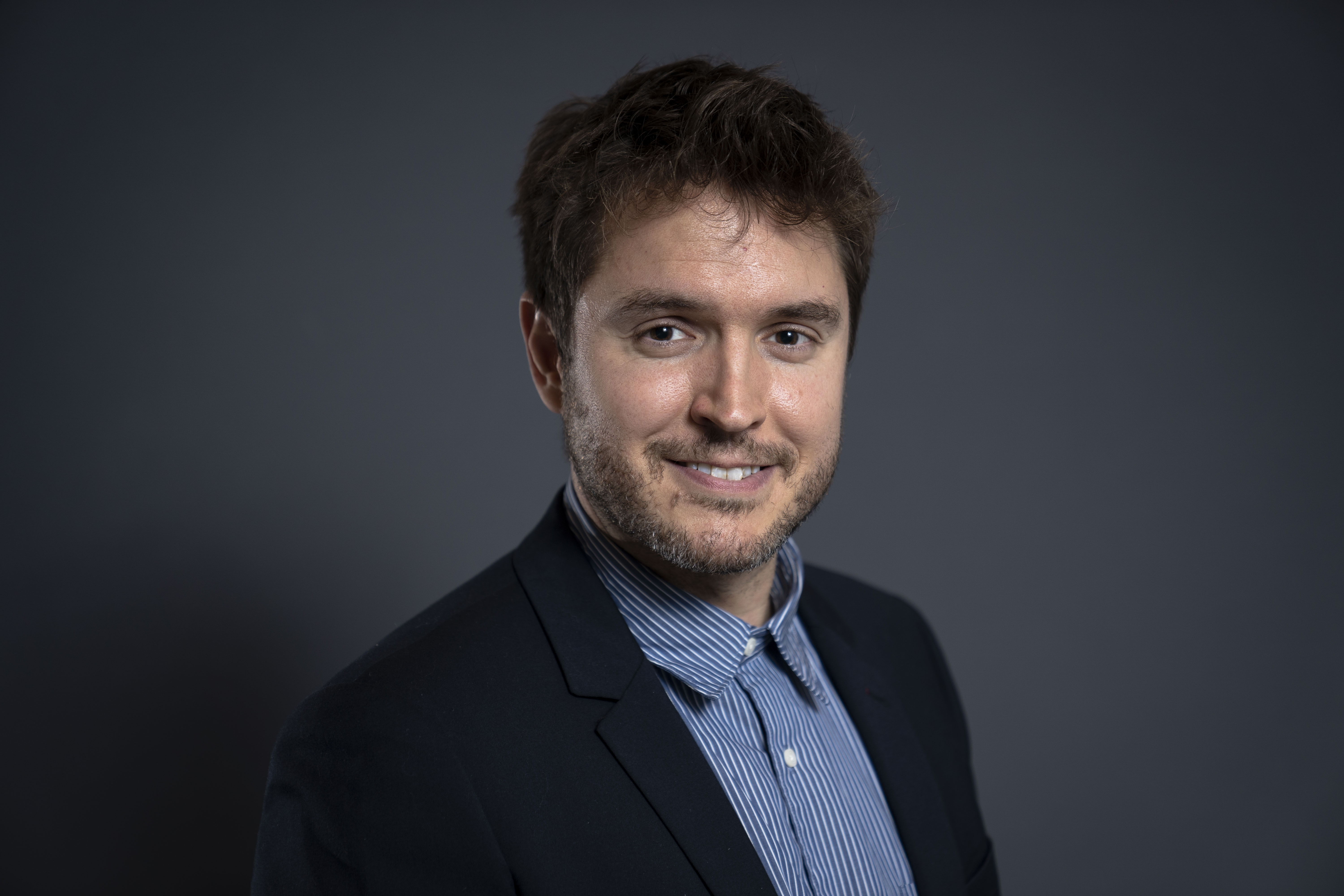Joel Cox
Research leader

Project title
Towards single-photon nonlinear optics in atomically-thin materials
What is your project about?
My project targets a long-standing challenge in the optical sciences: To efficiently control light with light itself. The idea is to exploit the ability of certain atomically-thin or two-dimensional (2D) materials to focus light on extreme levels—down to nanometer length scales—and trigger “nonlinear” light-matter interactions, effectively allowing light to manipulate light. I will develop theoretical methods to describe such nonlinear optical interactions in engineered 2D materials, identifying the best possible configurations to maximize their efficiency. Ultimately, I aim to discover platforms where individual light quanta (photons) can be made to interact strongly among themselves. My project will relate closely with experimental efforts to advance photonics research towards the development of fundamentally new light-based technologies.
How did you become interested in your particular field of research?
Electromagnetism and quantum mechanics were always my favorite topics in physics; nano-optics represents a field of research rooted in both, seeking to understand light-matter interactions in the "mesoscopic" regime—where the frontiers of classical and quantum physics coalesce. I have been recently investigating light-matter interactions in graphene—the “original” atomically-thin material—which has extraordinary electronic and optical properties. Since the discovery of graphene in 2004, many more 2D materials have become available, bringing exciting new possibilities for nano-optics that I am eager to explore. I am a theoretical physicist who enjoys working on problems that are closely related to experiments, and which ultimately might inspire new technologies that benefit society.
What are the scientific challenges and perspectives in your project?
Nonlinear optical phenomena typically require high-powered lasers and large crystals in which to accumulate a detectable signal, so it is difficult to scale these processes down to the nano-world, where materials are structured on length scales much smaller than the light wavelength and are often fragile. The application of state-of-the-art theoretical methods to describe nonlinear optical phenomena, which are more complicated than conventional optical processes, also presents a technical challenge, particularly when considering multiple 2D materials that interact both with external light and one another. In a broad perspective, the project aims to advance fundamental science relating to nanoscale light-matter interactions in atomically-thin materials, unveiling new functionalities that can launch experimental investigations of the most promising 2D material platforms for nonlinear optics.
What is your estimate of the impact, which your project may have to society in the long term?
My project aims to overcome current barriers in nonlinear optics, paving the way for high-speed all-optical information processing, and advancing towards the ultimate limit of single-photon nonlinearity, which would introduce new frontiers in physics, nanotechnology, and quantum information science. While photonics already plays a key role in information and communication technologies, the performance of light-driven devices is impeded by their need to convert electrical and optical signals. Efficient control of light by light on the nanoscale would alleviate this limitation by allowing integrated photonic devices to replace their electronic counterparts, which are reaching their fundamental limits of speed and efficiency.
Which impact do you expect the Sapere Aude programme will have on your career as a researcher?
The Sapere Aude starting grant is a major step towards consolidating my status as an emerging international research leader in nano-optics. The grant allows me to build a strong research team dedicated to the project that I am passionate about, provides resources to perform computationally intensive simulations, and will enable wide dissemination of research results, both in Denmark and internationally. The grant will help position me to compete for ERC-level schemes and other major funding opportunities in the future.
Background and personal life
Growing up in Canada I enjoyed being active outdoors and close to nature. After living in Spain during my postdoctoral fellowship, I became captivated with life in Europe, where so many diverse and fascinating cultures come together. I still like to stay active, even if only running or riding my bicycle around the city, while I take the opportunity to go on hiking or skiing trips whenever I can. I live with my partner Sara, and in our free time we enjoy exploring Denmark together, spending time with friends, and hyggelig nights at home with a good book or a movie.
View all research leaders here
Research institution
University of Southern Denmark, Faculty of Science, Center for Nano Optics / Danish Institute for Advanced Study,
Research field
Physics
City of your current residence
Copenhagen
High school
Waterloo Collegiate Institute, Canada
